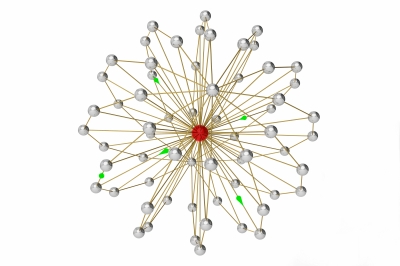[This is a part of the Fundamentals of Effective Catechesis series.]
We’ve seen how the Catholic Faith is a network of connected doctrines with a central theme.
And, that the Faith is only fully understood within this context.
So…how do you structure your catechesis to be connected?
St. Paul understood this problem all too well. To communicate a message made up of many different parts, you need to concentrate on the heart–the central theme of that message!
The key to the central, organizing theme of catechesis is the “mystery” at the heart of St. Paul’s message.
The mystery of Christ
St. Paul is the model for connected catechesis. His letters are full of deep theology yet they’re clearly unified.
Over and over he returns to a few key themes. But ultimately there’s one doctrine, a central mystery, that is all-comprehensive. It’s his special insight into “the mystery of Christ.”
In Ephesians 3, Paul lays out his catechetical mandate.
“To me, though I am the very least of all the saints, this grace was given, to preach to the Gentiles the unsearchable riches of Christ, and to make all men see what is the plan of the mystery hidden for all ages in God…that through the Church the manifold wisdom of God might now be made known.” (3:8-10, emphasis added)
What is St. Paul saying?
- The content of his teaching is “the unsearchable riches of Christ”
- But he also wants everyone to see the whole “plan of the mystery” that’s been hidden before now
- This hidden “wisdom of God” is made known “through the Church”
The content of the message is Christ
The content of our catechesis must be Christ–what we receive from him and what we have in him.
The General Directory for Catechesis (GDC) 98 says “the fundamental task of catechesis is to present Christ and everything in relation to him…every element of the message tends to this” (emphasis added).
All Catholic doctrine flows from the life and teaching of Jesus Christ. He is at the center. As a catechist, you must seek to transmit that.
But there’s more.
How do you teach the “everything in relation to him” part? That’s the key I’m looking for here!
The plan of the mystery
The mystery of Christ encompasses more than just the life of Jesus from Bethlehem to Calvary. It’s God’s whole plan of salvation from the beginning of time, extending into the present and reaching beyond.
Christ’s earthly life doesn’t stand in isolation. Everything before Christ points to him. Everything after Christ emanates from him. He is the center of history and time, and all things have a connection to him.
Christ reveals the mystery of the Father and his love. He made his home with us and gave himself to us in order to take us home to himself. And, not only each of us individually, but together in the union we form with him in his Mystical Body, the Church.
The mystery is salvation history
So, the mystery of Christ is really the message of salvation as revealed through history, recorded in the Bible and interpreted by the Church. Christ’s life is the central event that ties everything together and gives it unity.
This is also known as salvation history.
In essence, this is how the early Church formulated its doctrine. The Catholic Church doesn’t draw her understanding of Christianity from the New Testament alone, but from the interplay of the Old and the New centered in the life and teachings of Christ.
Because the basic understanding of Catholic doctrine flows from this, salvation history should also be the central, organizing theme for teaching this doctrine.
Catechetical takeaway
This is the method I use and I can tell you it works!
It can be adapted for use with any age group starting in the early grades.
In the beginning, it’s just laying the foundation of the stories but from there you build. In the middle school grades all the way to adults, you can make connections within the entire Catholic Faith in a way that resonates with people and just makes sense.
I’m not exaggerating when I say that every Catholic doctrine can be explained using the story of salvation as the interpretive context.
If you learn to make these connections, I know you’ll increase the engagement and enthusiasm of your students as they come to know the depth, unity and interconnectedness of the Catholic Faith.
Here are some resources to get you going on salvation history:
- A Father Who Keeps His Promises by Scott Hahn
- For an in depth online study of this, see Covenant Love: Introducing the Biblical Worldview by Scott Hahn
- Catholic Bible Dictionary by Scott Hahn
- The Great Adventure Bible Studies (particularly The Bible Timeline) by Jeff Cavins
- For a shorter study of this, A Quick Journey Through the Bible, also by Jeff Cavins is very good.
Do you have questions about what salvation history is or how this works? Ask them in the comments.
This was the third part of Fundamentals of Effective Catechesis series. Stay tuned for future posts!

